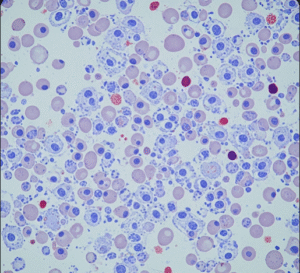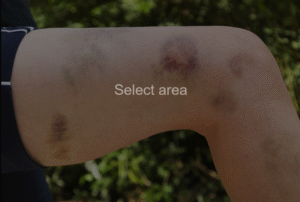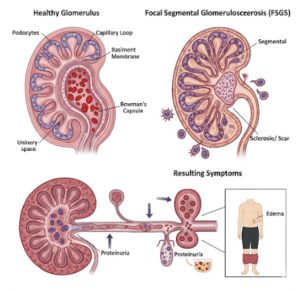Overview
Optic neuritis is an inflammatory condition of the optic nerve, which transmits visual signals from the eye to the brain. This inflammation can cause sudden vision loss, eye pain, and other visual disturbances, usually in one eye. Optic neuritis is often associated with multiple sclerosis (MS) but may also occur as an isolated condition or due to infections, autoimmune disorders, or medications. Early diagnosis and treatment are important for preserving vision and identifying underlying neurological conditions.
What is Optic Neuritis?
Optic neuritis is the swelling or inflammation of the optic nerve, often caused by an immune-mediated attack on the protective myelin sheath around the nerve. This disrupts the normal transmission of visual information, resulting in symptoms like blurred vision, color desaturation, or vision loss. The condition typically affects young adults, especially women between 20 and 40 years of age. It may be recurrent and is frequently a first sign of multiple sclerosis, a chronic central nervous system disorder.
Symptoms
Symptoms of optic neuritis usually develop rapidly over hours or days and may include:
- Sudden vision loss in one eye (partial or complete)
- Eye pain, especially when moving the eyes
- Washed-out or faded color vision (especially red tones)
- Blurry or dim vision
- Flashing lights or visual flickering (phosphenes)
- Central scotoma (blind spot in the center of vision)
- Loss of contrast sensitivity
- Symptoms may worsen with heat or exercise (Uhthoff’s phenomenon)
Causes
Optic neuritis is most often caused by autoimmune inflammation, but other causes include infections and systemic diseases. Common causes include:
- Multiple sclerosis (MS) – most common association
- Neuromyelitis optica spectrum disorder (NMOSD)
- Myelin oligodendrocyte glycoprotein antibody disease (MOGAD)
- Autoimmune diseases (e.g., lupus, sarcoidosis, Behçet’s disease)
- Viral or bacterial infections (e.g., measles, mumps, Lyme disease, syphilis, tuberculosis)
- Toxic exposures or medications (e.g., ethambutol, methanol poisoning)
- Idiopathic (no identifiable cause)
Risk Factors
Several factors may increase the likelihood of developing optic neuritis:
- Being female (more common in women)
- Age between 20–45 years
- Family history of multiple sclerosis or autoimmune disease
- Presence of systemic autoimmune conditions
- Recent viral or bacterial infection
- Smoking, which is linked to MS progression and severity
Complications
Optic neuritis may lead to complications, particularly if the underlying cause is progressive:
- Permanent vision loss (in some cases)
- Recurrent optic neuritis
- Development of multiple sclerosis or NMOSD
- Visual field defects that may persist despite recovery
- Psychological impact, including anxiety or depression related to vision changes
Most patients experience some level of visual recovery within a few weeks to months, but not all fully regain pre-episode vision.
Prevention
There is no guaranteed way to prevent optic neuritis, but you can reduce risk or manage triggers with:
- Early diagnosis and treatment of autoimmune or systemic infections
- Regular monitoring if at risk for MS or NMOSD
- Avoiding known toxins or medications linked to optic nerve inflammation
- Smoking cessation, which supports neurological and ocular health
- Vitamin D optimization, which may reduce MS risk in predisposed individuals
Treatment Options in Korea
South Korea offers excellent diagnostic and treatment services for optic neuritis, supported by advanced imaging technologies and neurology-ophthalmology collaboration. Treatment typically includes:
- Intravenous corticosteroids (e.g., methylprednisolone) to reduce inflammation and speed up visual recovery
- Oral steroid taper after IV therapy in some cases
- Plasma exchange (PLEX): Used for severe or steroid-resistant cases, especially in NMOSD
- Treatment of underlying condition (e.g., MS, infection, autoimmune disease)
- Immunomodulatory therapy: If associated with MS, NMOSD, or MOGAD
- Vision rehabilitation and follow-up for long-term monitoring
Top Korean hospitals like Seoul National University Hospital, Samsung Medical Center, and Asan Medical Center provide advanced care with access to MRI, visual evoked potentials (VEP), OCT (Optical Coherence Tomography), and comprehensive neuro-ophthalmology services.













